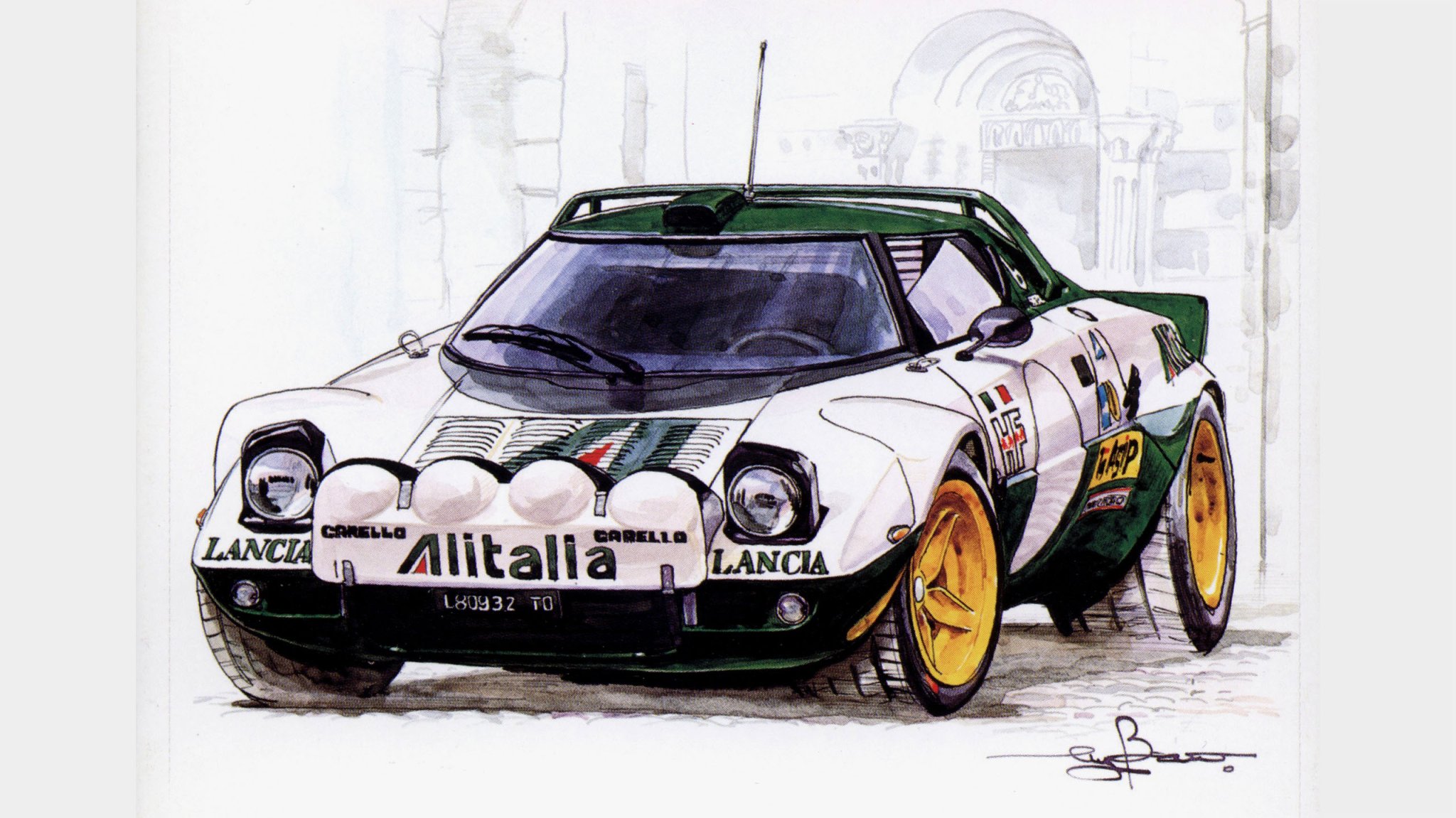

Anyone who knows me knows I love my Sega racing games more than any other. Though very young, I still remember being mesmerized by Sega Rally 2’s packaging when the game dropped 25 years and five days ago, as of this writing. Most racing games back then used real photos or stylized depictions of crude 3D models going wheel-to-wheel to lure shoppers perusing the racks at Electronics Boutique, but Sega Rally 2 was different. Simple in concept but powerful in execution, its cover bore a superbly illustrated Lancia Stratos posed in place, yet leaping from an almost stark white background. It was, and still is, gorgeous. Sadly, the artist behind it and a great many other works of automotive art passed away on November 17.
Kazuhiro Ikeda, better known by his pseudonym “Bow,” died of lymphoma earlier this month after seven years battling throat cancer; he was 78. While my generation likely knew Bow best for that Stratos, he was a prolific artist in Japan, having created thousands of pieces for a range of fashion, lifestyle, and enthusiast press publications. But immortalizing cars was undoubtedly his specialty.
See, Bow’s illustrations graced the cover of every issue of Car Magazine’s Japanese-language publication for four decades, right up until he retired in mid-2018 to focus on his treatment. When he stepped back from that duty, Car continued to honor the aesthetic he shaped with cutouts of real cars amid backdrops of white. A Jalopnik article from 2015, citing an interview with Bow conducted by Cycle World in 1996, mentions that he enjoyed illustrating motorcycle racing most of all. Moreover, there was never any question that Bow would wind up in his line of work; the artist saw an illustration of a 1949 Ford pickup at the age of three, and from that moment on, he knew exactly what he wanted to do.






Peering at Car’s back catalog is like strolling through an exhibition. I know nothing of art, but there’s something natural, warm, and idyllic to the way Bow rendered cars, old and new, in watercolor. Cars in his world were subjects of beauty, sure, but they were organic artifacts—approachable, vibrant characters of everyday life.
After his passing, individuals involved in Sega Rally 2’s development began sharing stories of how Bow’s work ended up promoting the game. Translated via X, SR2 producer Kenji Arai said that he traveled to Bow’s studio in 1997 or ’98 to negotiate permission to use the Stratos piece. As anyone who’s played the original Sega Rally will tell you, the Lancia Stratos is deified in that game, and clearly, Bow’s piece commanded the appropriate veneration.
“Absolutely, Bow readily agreed, as a car lover,” Arai wrote. The game’s lead designer, Kenji Sasaki, offered his own insight into what Bow’s Stratos contributed to the experience.


“Speaking of the [Dreamcast] and PC versions of Sega Rally 2, the image of this Stratos illustration makes it a little different from other Sega games,” Sasaki wrote. “I think it has a more mature atmosphere. It’s hard to find these days, but the Sega Rally 2 arrangement [soundtrack] CD, which uses the same illustrations, has an adult feel to it and is highly recommended. If you have the chance, give it a listen.”
I couldn’t agree more—both with the point about Bow’s work lending a “mature atmosphere” as well as the Another Entries CD recommendation. That album has some stunning jazz fusion arrangements of the game’s songs that’ll make your head explode if you’ve never heard them before, like I hadn’t until blogging this.

I’d be remiss not to add that Sega Rally 2’s cover was especially distinctive in North America. Before the internet shattered global barriers with respect to things like advertising, it wasn’t unusual for a Japanese game like SR2 to have its subtle, tasteful box art changed (read: ruined) out of a desire to better appeal to Western audiences. Gran Turismo certainly fell victim to this phenomenon in its early days, though perhaps the best worst example is what PlayStation’s American arm did to the cult-classic action-adventure game Ico.
The Sega Dreamcast felt like a different sort of gaming console, propelled by unbridled creativity and a pursuit of fun above all else. It was a peaceful venue to enjoy games. Likewise, Bow’s Stratos is as peaceful a work of automotive art as any you’re likely to find of a mid-engined Italian exotic from the ’70s. It left an impression on six-year-old me, though admittedly not as profound as the impression that Ford truck left on him 75 years ago. And wasn’t the car world all the better for that?
Want to talk racing games? Hit me up at adam.ismail@thedrive.com